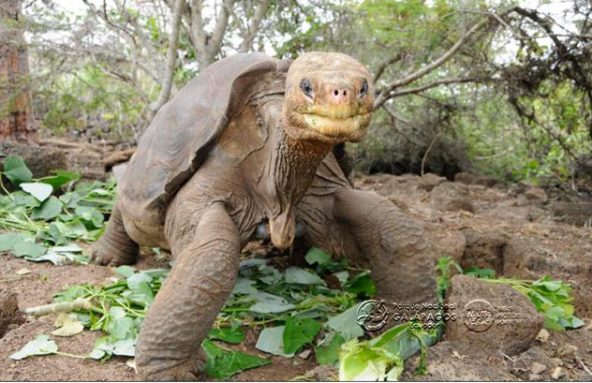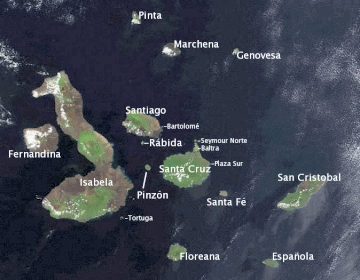Bye-bye, George
Ambassador of endangered species everywhere dies from old age
By Janet Raloff

For roughly a century, George slowly explored his territory on a Galápagos island off of Ecuador’s west coast. The 200-pound guy ambled slowly. But that was to be expected. George was a giant tortoise. Alas, sometime in the early morning hours of Sunday, June 24, Ecuador’s beloved reptile took his last step.
It was a sad time for the researchers and park rangers. For decades they had watched over the little guy (tortoises from other parts of the Galápagos Islands could be three times his size). But “Lonesome George,” as the tortoise had been known, will be affectionately remembered as the last ambassador of his Pinta Island home.
Giant land tortoises are rare. Among them, Lonesome George became quite an global celebrity. The chief reason: He was the sole surviving member of his subspecies (which is a genetically distinct group within a species).
George was first discovered on Pinta Island in 1972. Back then, biologists had already given up on his subspecies (Chelonoidis nigra abingdoni). They had ruled it extinct. But George’s survival held out hope that he might breed with females of a related subspecies. It would keep genes of his subspecies alive.

Wildlife biologists began by moving George. It was to another Galápagos island, Santa Cruz. Here, they had set up a captive-breeding center. Biologists then brought in two females from a somewhat related subspecies (Chelonoidis nigra becki). They had been captured on nearby Isabela Island. Over a 15-year period, the two female members of this Volcan Wolf Galápagos tortoise laid a total of 16 eggs. None proved fertile. Biologists at the research facility concluded that maybe the two subspecies were not closely related enough for them to breed successfully.
Genetic analyses turned up a more closely related subspecies. It was a giant tortoise on Ecuador’s Española Island. Two years ago, females from there, also in the Galápagos, were taken to the breeding center. The scientists put them in a pen with George. But still no babies.
In the days before his death on Sunday, George ate normally and appeared fine. So on Monday, veterinarians performed a necropsy — the animal version of an autopsy. The findings, government officials reported Tuesday, indicated George had died from natural causes.
Over the last four decades, George evolved to become a living symbol throughout the world of the risk of species extinctions. Efforts to save his genetic line — and that of other giant tortoises — spilled over into efforts to save other imperiled species as well, notes Edwin Naula. He is the director of Galápagos National Park. As such, Naula vowed this week that George’s carcass will be preserved. Later, it will go on display as part of a new tortoise museum in the park. He vowed the facility would be named in George’s honor.
Power words:
Galápagos Islands in the Pacific Ocean that belong to Ecuador and are located some 1,000 kilometers (620 miles) west of the South American mainland. Charles Darwin’s visit to the islands in 1835 and his observation of unusual animals on them inspired his theory of evolution.
necropsy The examination of the remains of an animal, usually to determine cause of death. When conducted on people, this examination is called an autopsy.
tortoise Any of various turtles that live on land.
subspecies A subdivision of a species, usually based on geographic separations. Over time, this separation may have allowed some of the genes in a population of a species to vary, creating differences in those organisms’ appearance or adaptation to the local environment.







